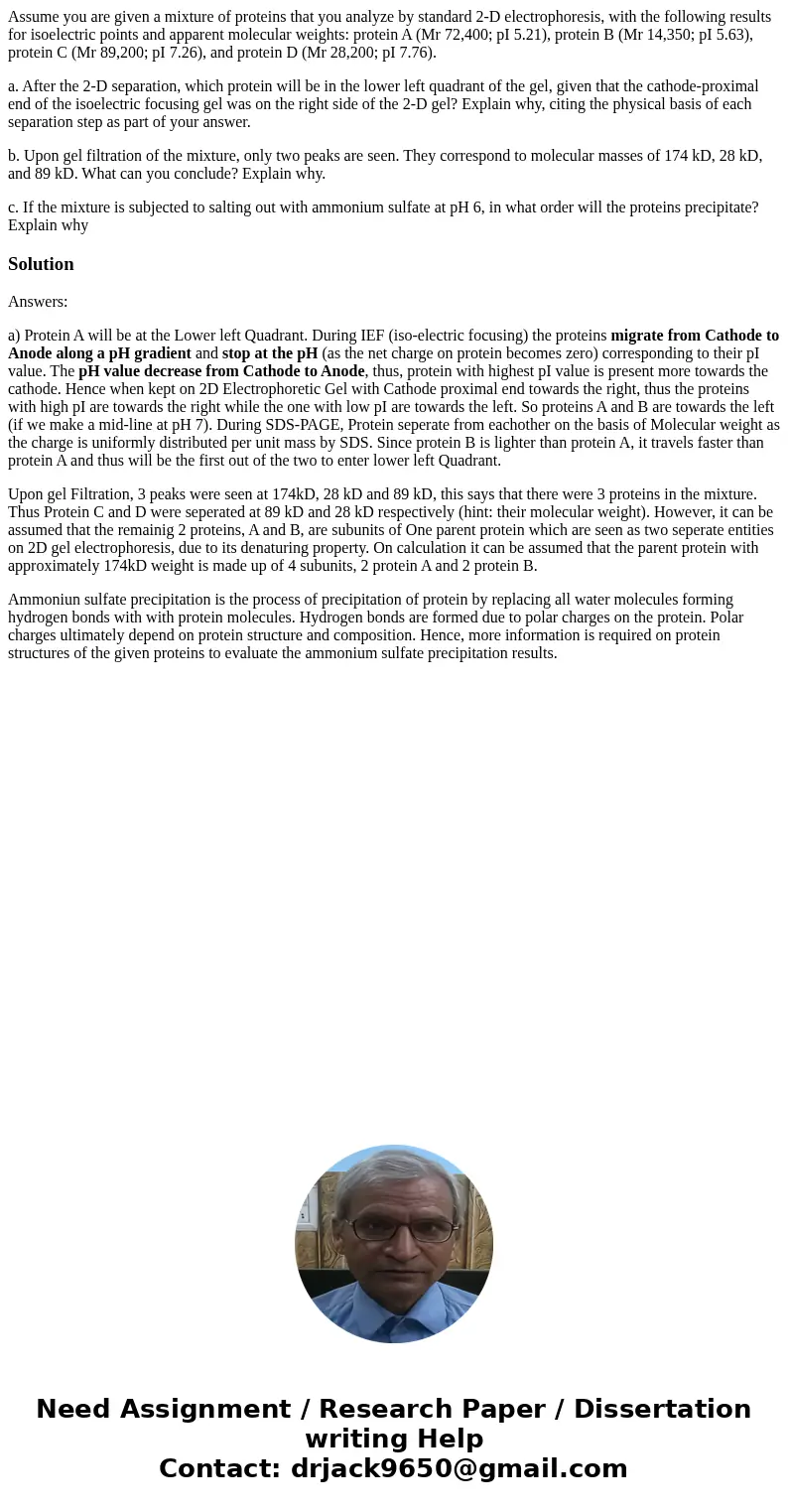Assume you are given a mixture of proteins that you analyze
Assume you are given a mixture of proteins that you analyze by standard 2-D electrophoresis, with the following results for isoelectric points and apparent molecular weights: protein A (Mr 72,400; pI 5.21), protein B (Mr 14,350; pI 5.63), protein C (Mr 89,200; pI 7.26), and protein D (Mr 28,200; pI 7.76).
a. After the 2-D separation, which protein will be in the lower left quadrant of the gel, given that the cathode-proximal end of the isoelectric focusing gel was on the right side of the 2-D gel? Explain why, citing the physical basis of each separation step as part of your answer.
b. Upon gel filtration of the mixture, only two peaks are seen. They correspond to molecular masses of 174 kD, 28 kD, and 89 kD. What can you conclude? Explain why.
c. If the mixture is subjected to salting out with ammonium sulfate at pH 6, in what order will the proteins precipitate? Explain why
Solution
Answers:
a) Protein A will be at the Lower left Quadrant. During IEF (iso-electric focusing) the proteins migrate from Cathode to Anode along a pH gradient and stop at the pH (as the net charge on protein becomes zero) corresponding to their pI value. The pH value decrease from Cathode to Anode, thus, protein with highest pI value is present more towards the cathode. Hence when kept on 2D Electrophoretic Gel with Cathode proximal end towards the right, thus the proteins with high pI are towards the right while the one with low pI are towards the left. So proteins A and B are towards the left (if we make a mid-line at pH 7). During SDS-PAGE, Protein seperate from eachother on the basis of Molecular weight as the charge is uniformly distributed per unit mass by SDS. Since protein B is lighter than protein A, it travels faster than protein A and thus will be the first out of the two to enter lower left Quadrant.
Upon gel Filtration, 3 peaks were seen at 174kD, 28 kD and 89 kD, this says that there were 3 proteins in the mixture. Thus Protein C and D were seperated at 89 kD and 28 kD respectively (hint: their molecular weight). However, it can be assumed that the remainig 2 proteins, A and B, are subunits of One parent protein which are seen as two seperate entities on 2D gel electrophoresis, due to its denaturing property. On calculation it can be assumed that the parent protein with approximately 174kD weight is made up of 4 subunits, 2 protein A and 2 protein B.
Ammoniun sulfate precipitation is the process of precipitation of protein by replacing all water molecules forming hydrogen bonds with with protein molecules. Hydrogen bonds are formed due to polar charges on the protein. Polar charges ultimately depend on protein structure and composition. Hence, more information is required on protein structures of the given proteins to evaluate the ammonium sulfate precipitation results.

 Homework Sourse
Homework Sourse